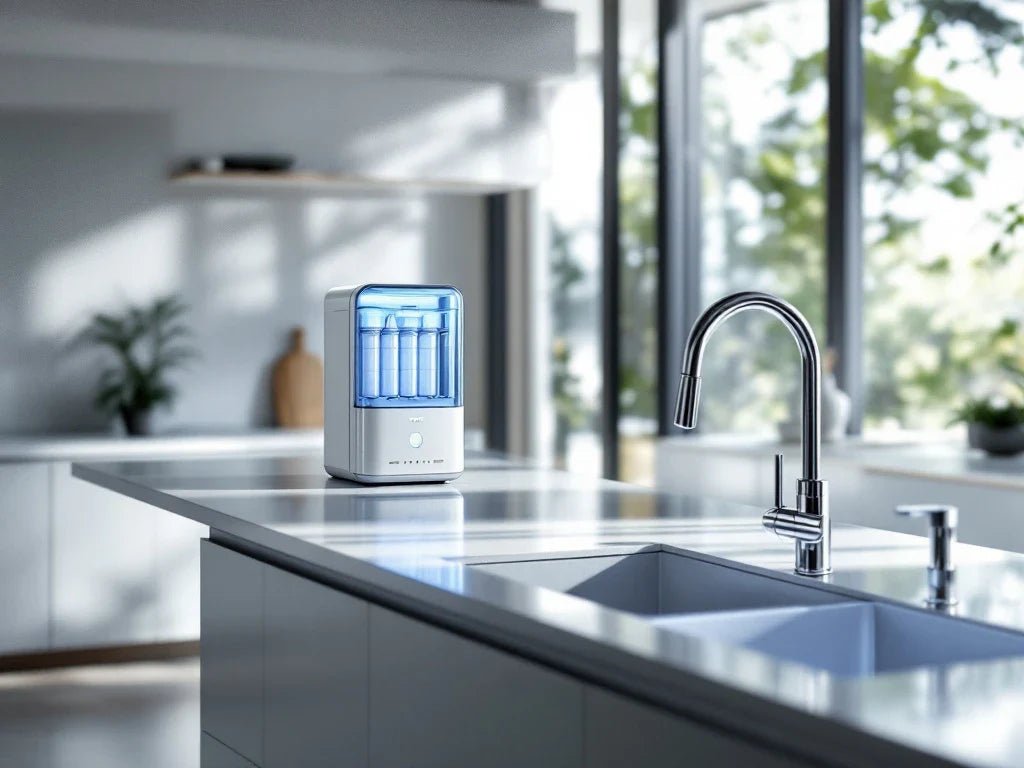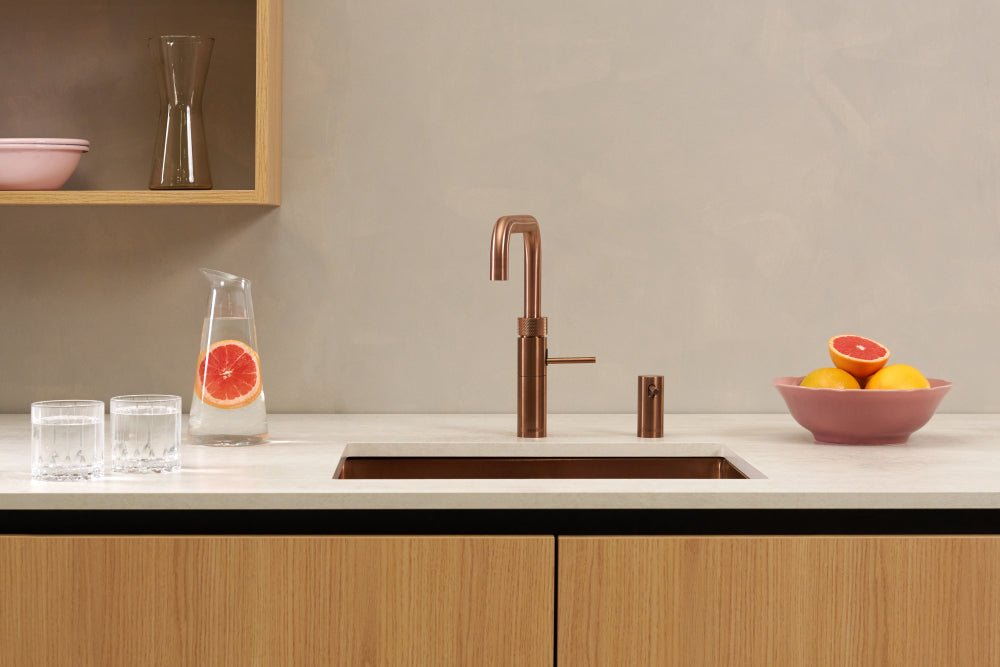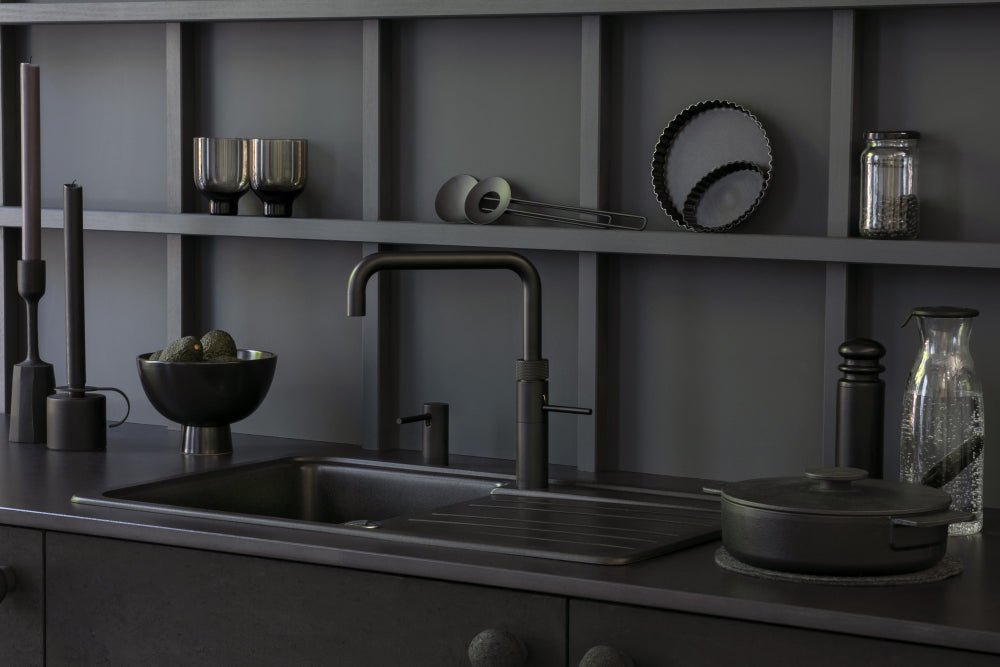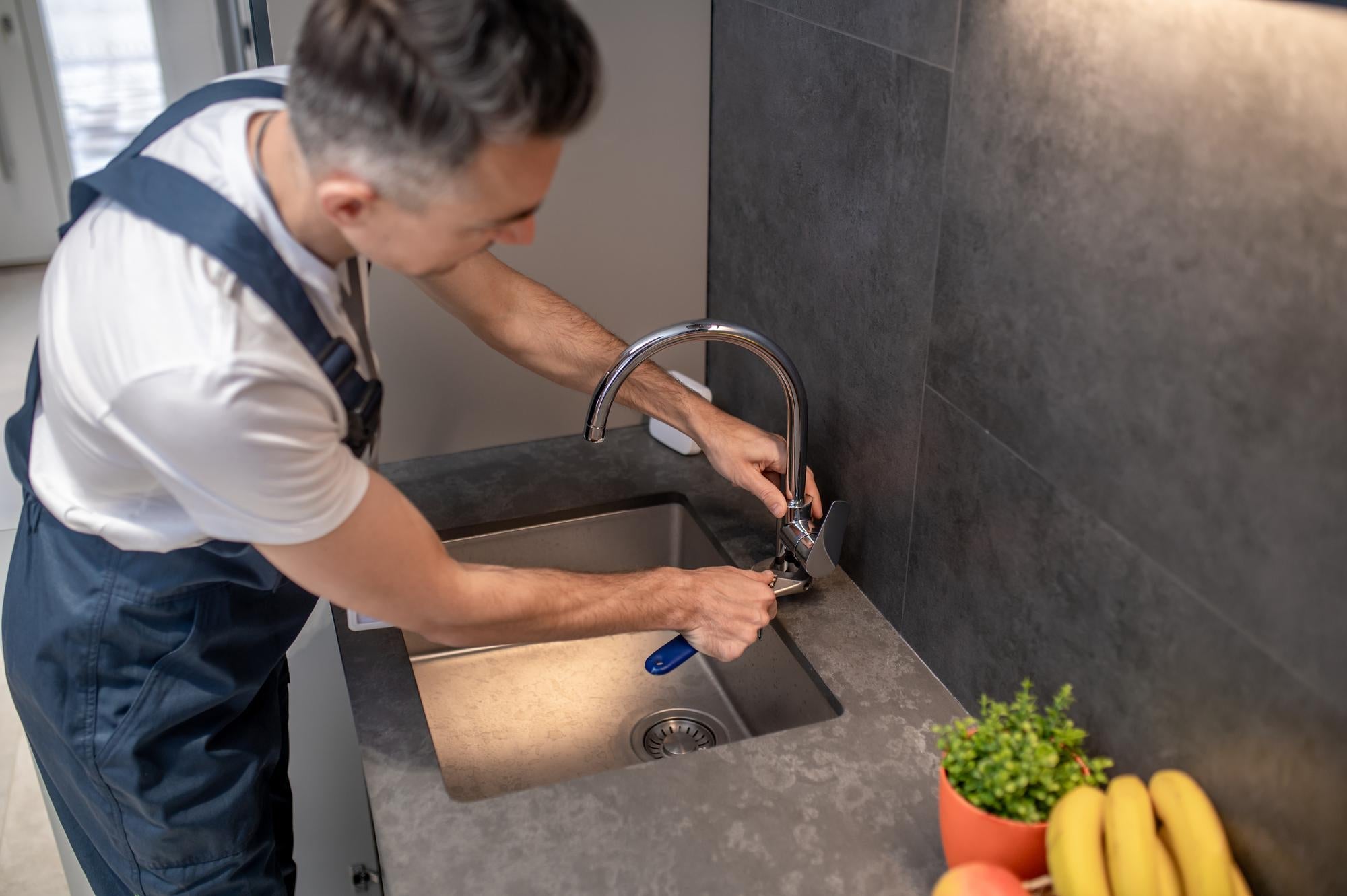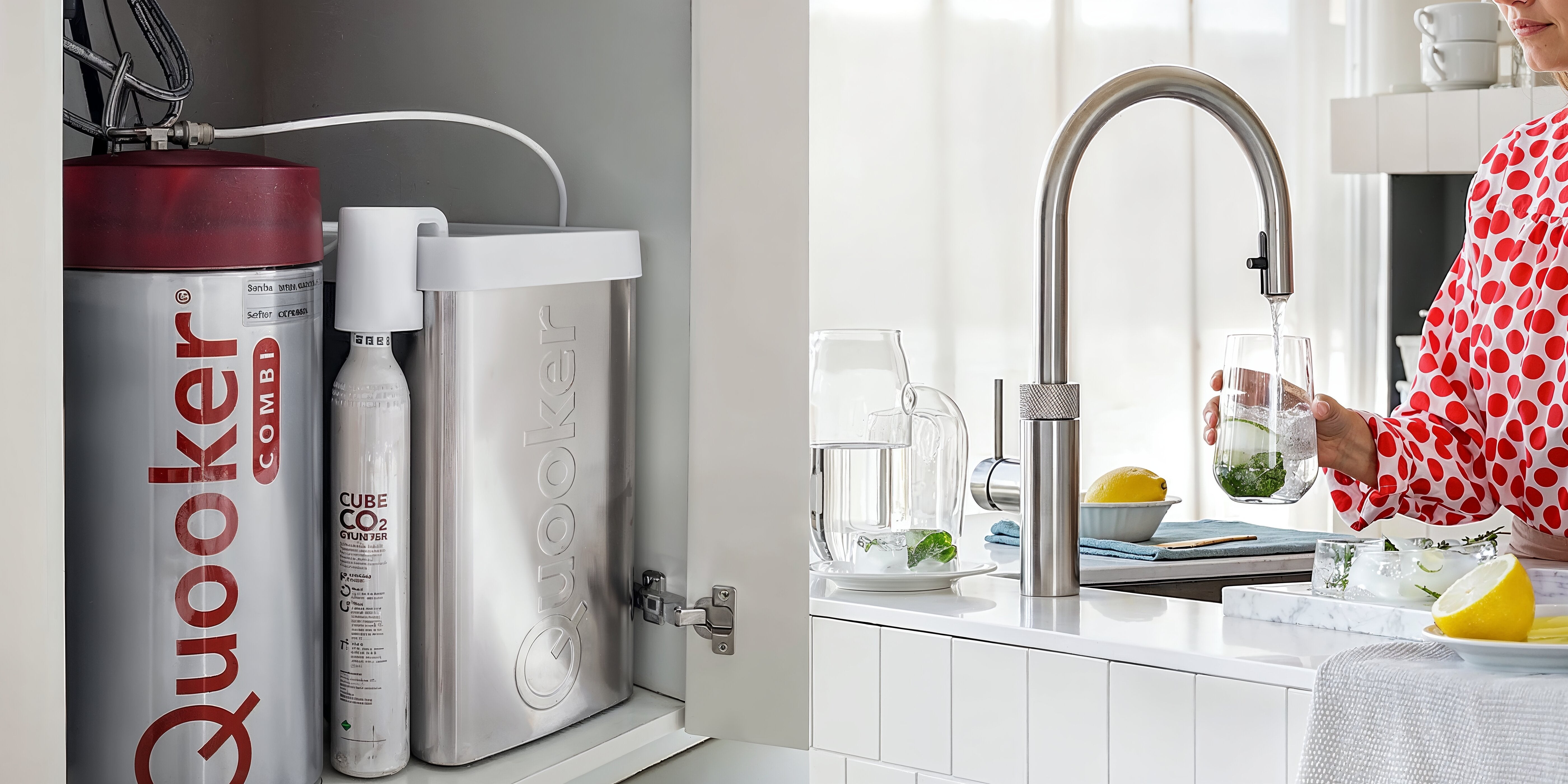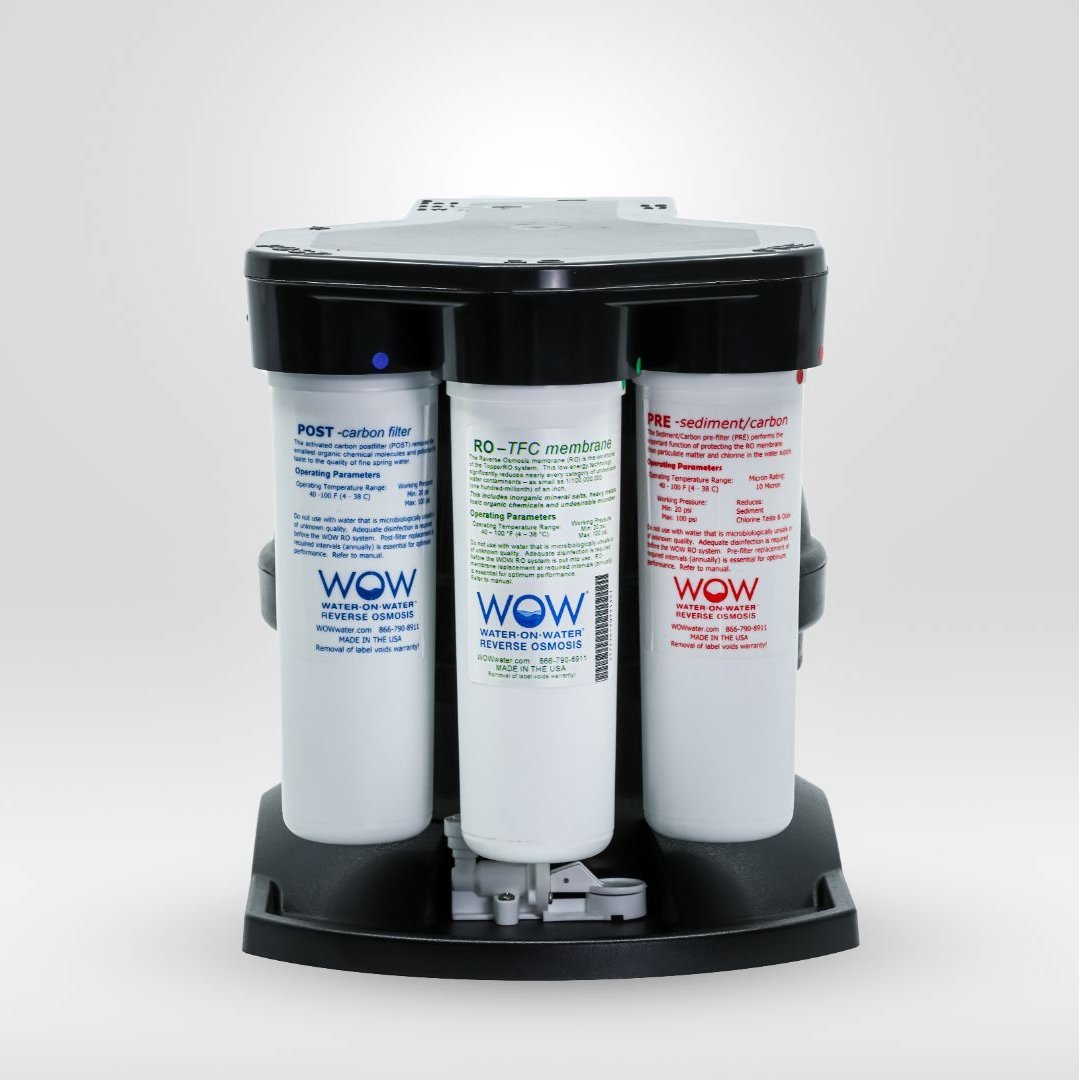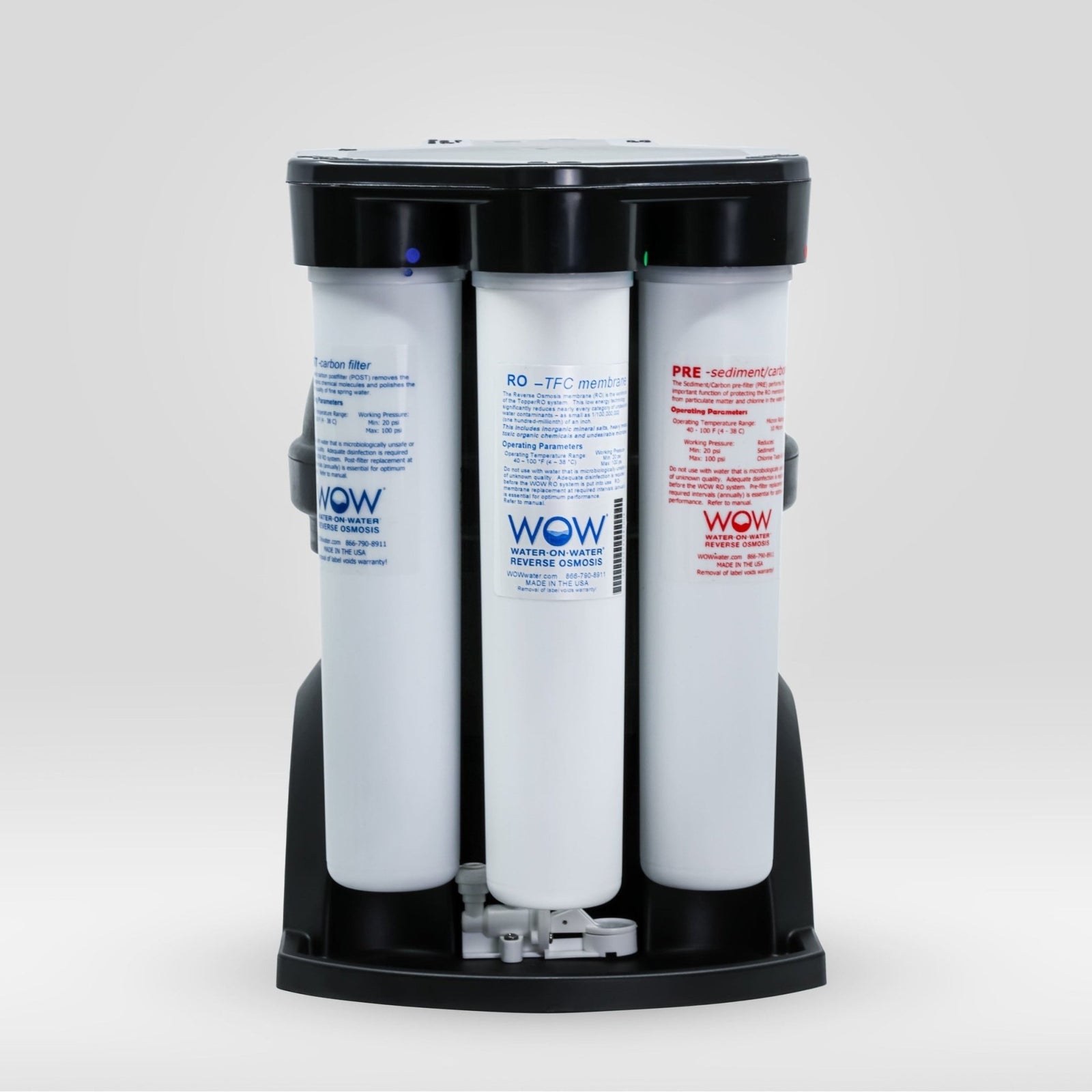Modern water purification technologies offer effective solutions for lead contamination in drinking water. Advanced filter systems, particularly those based on reverse osmosis technology, can remove up to 99% of harmful substances such as lead. These systems work by forcing water under pressure through a semipermeable membrane, resulting in pure water that is safe to drink and tastes better.
How does a water purifier work against lead contamination?
Water purifiers use various technologies to filter lead and other harmful substances from drinking water. The most effective are systems that use reverse osmosis. This technology is the heart of high-quality water filter systems like The Source from PureAqua.
Reverse osmosis involves forcing water under pressure through a semipermeable membrane. This membrane has microscopic pores (approximately 1/100,000,000 of an inch) that allow only water molecules to pass through, while retaining lead and other contaminants. This process removes not only lead but also other harmful substances such as heavy metals, inorganic mineral salts, toxic organic chemicals, and microbes.
Besides reverse osmosis, there are other filtration technologies that can be effective against lead:
- Activated carbon filtration : This technology uses carbon to bind contaminants. It is particularly effective against organic contamination and can serve as a pre-filter in a multi-stage purification system.
- Ion exchange : This method replaces harmful ions (such as lead) with harmless ions, resulting in purified water.
The most advanced water filter systems, such as The Source, combine several technologies in a multi-stage purification process:
- Pre-treatment with an activated carbon filter to remove larger particles and organic contamination
- Reverse osmosis where the water is forced through a semipermeable membrane
- Storage in a special tank
- Post-treatment with a polishing filter for the perfect taste
Which types of water purifiers are most effective against lead?
Not all water purifiers are equally effective at removing lead from drinking water. Systems using reverse osmosis technology offer the highest purification levels, with a removal rate of up to 99% of harmful substances, including lead.
There are different types of water purifiers available, each with their own advantages and disadvantages:
| System type | Effectiveness against lead |
|---|---|
| Under-counter systems (RO) | Very high (up to 99%) |
| Crane systems | Average to low |
| Filter jugs | Low to very low |
Under-sink systems like The Source from PureAqua are the most effective against lead contamination. These systems are connected directly to the water supply and filter the water before it leaves the tap. They utilize advanced technologies like reverse osmosis and often have multiple filter stages.
PureAqua offers several water filter systems specifically designed to remove lead and other harmful substances from drinking water. Their flagship product is The Source, an advanced system that uses reverse osmosis technology and removes up to 99% of unwanted substances from tap water.
To monitor the quality of your drinking water, it's helpful to regularly perform a TDS (Total Dissolved Solids) test. Creating a water filter system that's right for your specific situation is an important step toward safer drinking water.
How much does a good water purifier for lead filtration cost?
The investment in a water purifier that effectively filters lead varies depending on the system type and technology. High-quality reverse osmosis systems, which are the most effective against lead, are a larger investment than simpler solutions, but also offer better results.
For a quality reverse osmosis system, you should expect a purchase price between €500 and €1500, depending on the brand, capacity, and additional features. Besides the purchase price, there are also installation costs, which can range from €0 (for self-installation) to around €200 for professional installation.
Maintenance costs are an important aspect to consider. Filters must be replaced regularly to ensure optimal performance:
- Pre-filters: about once a year
- Reverse osmosis membrane: approximately every 2-3 years
- Post-filters: approximately once a year
Annual maintenance costs average €100-€150, depending on water quality and usage.
While the initial investment may seem significant, it's important to weigh it against the health benefits and potential savings. A household that regularly buys bottled water can recoup the cost of a water purification system within a few years. Moreover, the peace of mind that comes with knowing your water is free of lead and other harmful substances is priceless for many people.
At PureAqua, we offer support and service throughout the life of your system. We're here to help you choose the right system for your specific needs and budget.
